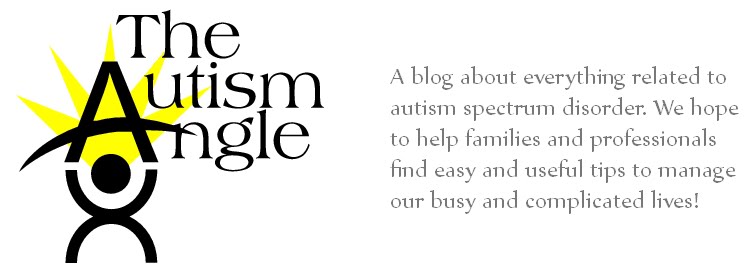Tasks, activities, file folder games, adaptive books, etc. are something that if we had all the time (and money!) in the world we would make them for all the wonderful families we work with! To share our fun with everyone else, we have decided to create a reoccurring post illustrating the excitement with learning that we can have. Therefore, 'Activities on the Angle' will be ideally a weekly or bi-weekly insight into our creative side; or a peek into the madness!
I am always viewed as thrifty; the nice way of saying cheap! I am always looking for a good bargain or a way to reuse what I already have. The results may not always have the most curb appeal but they get the job done. Trying to incorporate this into making tasks is important for us, as it is for so many parents and professionals.
Matching is a way of putting things that are the same together. It is a skill that is at the foundation in many academic areas. Sorting and matching can be overwhelming for the kids we work with because of the disorganization of the materials and/or presenting too many items at once. Each child needs to be started at a different stage based on their developmental progress, distractability and organization. Hopefully we will start with a few tasks to get your creative juices flowing for your own situation. Often, individuals with autism are somewhat driven to match and it can even be a calming process (or at least a distraction from the frustration).
Number and Letter matching
'Dollar Tree' is a great resource for materials for learning. Teachers, homeschooling, therapists and parents can find lots of great teaching tasks to use as is or if adapted. I started with a couple of posters of numbers and one of the alphabet. On the alphabet poster you will notice extra pictures next to each letter. There are stickers of 'Toy Story' characters that were added to learn phonics since this was my little helper's big interest ;)
If I could laminate everything around me I would but it is quite costly and it may not be great for my kids! When thinking thrifty and time-saving, clear packing tape (or contact paper) is my go to. Packing tape made these numbers & letters sturdy for lots of matching. I also try to find alternatives to Velcro as much as possible but for this activity I went all out. So, with our posters here is what we started with. Although I printed the numbers and letters, it is super easy to just write on index cards or paper.
We used an old coffee can to pull the letters and numbers from but recognize this could be overwhelming amount of materials at first. Giving a smaller amount at a time or covering up a section of the poster at first may be a starting point.
Card Sorting
These materials can be used to make lots of different activities in one. Tell people in your life to clear our their baseball card collections (I sure did!). It is time to part with those cards that have no value and make some fun activities. Baseball card sleeves are perfect for sorting random cards that are cluttering up closets everywhere. Little is needed for this task but I did use 'library pockets' (without adhesive but they sell them with sticky backing as well). Also you can use an envelope to gather loose cards for each page. A simple three ring binder can contain all your goodies.
We used some dinosaur cards to sort and match (along with old baseball logos and cards).
On the matching with animal pictures we added clear words on the card and card sleeve to match. (These cards are from a children's National Geographic magazine) Although this child is not at reading level yet, matching the letters was fun for her.
As stated before, this is the start of an ongoing process for Molly and I. We thoroughly enjoy making activities that each individual can be successful at and enjoy at the same time. Finding ways of incorporating interests, can truly make learning fun!
-Abby













I LOVE this new series. Thanks for the ideas and looking forward to making some of these.
ReplyDeleteBrian, if you're reading this, can I have your baseball card pages? Ha ha!
Thanks, Christy! I was quite excited with my husband's contribution to our tasks and no tears were shed; at least not in my presence!
ReplyDelete-Abby
Oh, how I wish I had known you and had your blog to follow when I was teaching (retired 9 years now)I love TEACCH. Would have loved to have had some TEACCH Training at Chapel Hill. I used the PEP-R and the TEACCH program for many children who were developmentally delayed. I made my own PEP-R Kit and every one of the activities in ziplock bags. It is an awesome program that should be used much more extensively.
ReplyDeleteI look forward to returning to your blog frequently, follow on twitter and fb.
Thanks, Jean! The PEP-R is a great assessment tool and really helps us figure out where gaps in learning can occur. We look forward to hearing more from you about your experiences as a teacher!!
ReplyDelete-Abby
I love this....my son is a bit older (7) and is past this area but he would have died to try some of these!!!
ReplyDeleteThis is going to be a great series--thank you!
Thanks, Lizbeth! I hope you will find some helpful hints in one of our posts for your son!
ReplyDelete